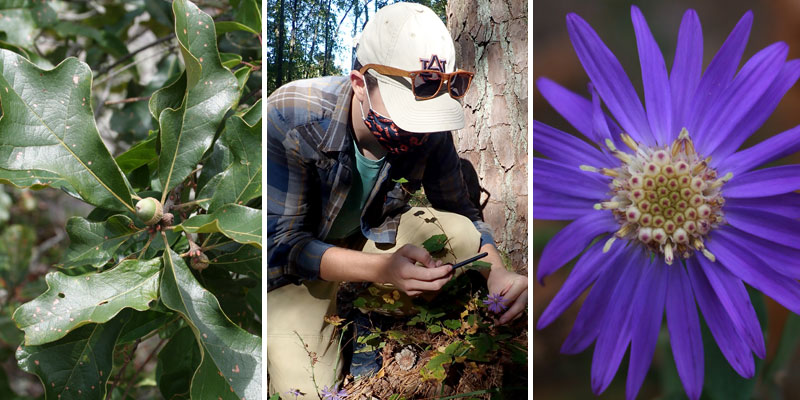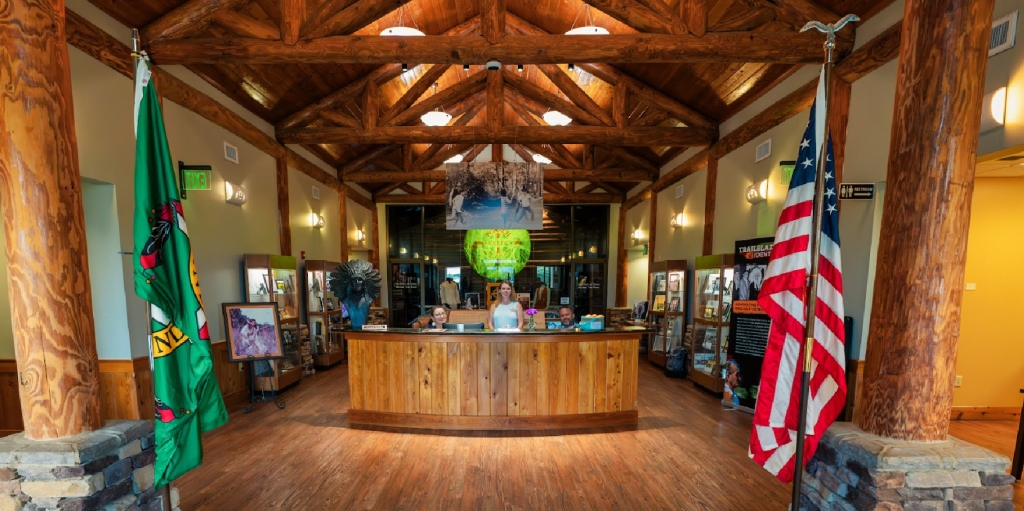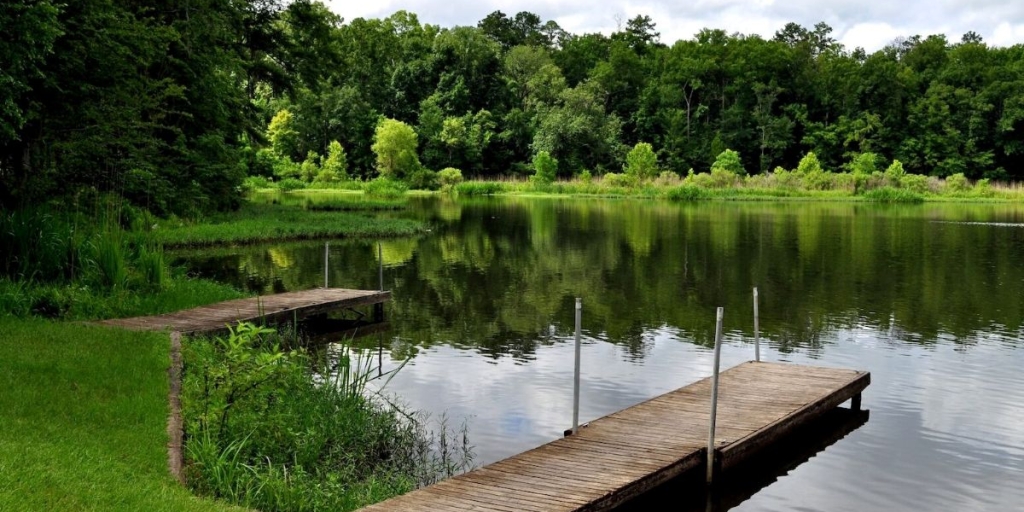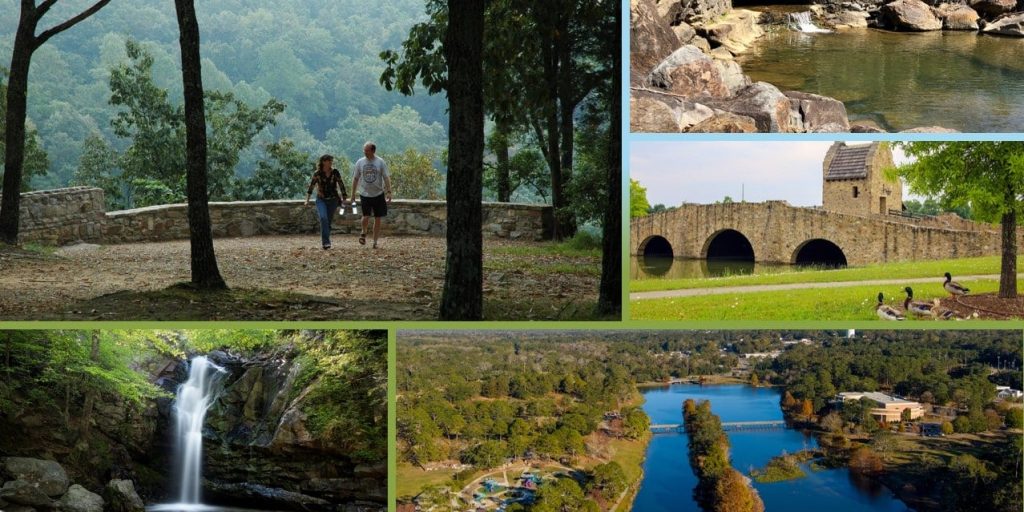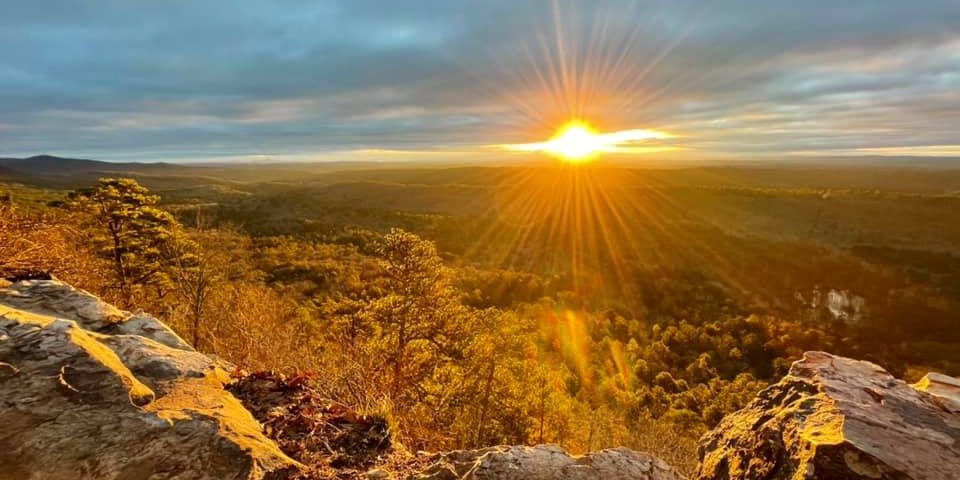When Noah Yawn headed out for Oak Mountain State Park in October 2020, he was planning to take part in a survey for a tree found only in Alabama. What he didn’t expect was to also stumble upon a sizable population of another rare plant species – the Georgia Aster.
The survey was part of an ongoing effort of the Alabama Plant Conservation Alliance (APCA) to better understand the range and natural history of the Alabama Sandstone Oak, a tree only found in six north-central Alabama counties.
Yawn, an undergraduate student assistant in conservation and botany studies at Auburn University, was looking for the rare oak when he first spotted the asters through what he calls “drive-by botany.”
“Driving through the park at 25 miles per hour with my windows down is how I unintentionally discovered the park’s roadside populations of the aster,” Yawn said. “I estimate there are approximately 500-1,000 individual flowering stems at the documented roadside sites. These sites are scattered over 1 to 2 miles along Terrace Drive.”
Often considered the Southeast’s largest, prettiest and most purple aster species, this distinctive plant can grow to more than 3 feet tall and features a large flower head encircled with deep purple to lavender petals. Once found in woodlands and Piedmont prairies throughout the Southeast, the Georgia Aster is currently only found in a few counties in Alabama, Georgia, South Carolina and North Carolina.
In recent years, a multi-state/multi-organization agreement was developed to provide a framework for the conservation and management of Georgia Aster throughout its range. The goal of the agreement is to conserve and improve current populations and keep the aster from being federally listed as an endangered species.
“Even the smallest preserved natural areas, including roadsides, can protect extremely valuable and imperiled species,” Yawn said. “The Georgia Aster at Oak Mountain State Park represents some of the only populations in Alabama that are protected on state lands, making this all the more exciting.”
Located just south of Birmingham, Oak Mountain is Alabama’s largest state park at 9,940 acres. The park’s size and the varied nature of its Ridge and Valley habitat is partly responsible for the high level of biodiversity found at Oak Mountain.
Chris Blankenship, Commissioner of the Alabama Department of Conservation and Natural Resources (ADCNR), said these discoveries highlight the importance of public lands, including our State Parks, to the conservation of rare plant and animal species.
“Alabama’s State Parks, Forever Wild tracts, Wildlife Management Areas and other state lands play a vital role in conserving important habitat for some plants and animals found nowhere else in the world,” Commissioner Blankenship said. “These locations ensure the public can continue to enjoy the rich diversity of Alabama’s landscape for generations to come.”
While finding the Georgia Aster at Oak Mountain was a pleasant surprise, the main focus of the survey was to document the Alabama Sandstone Oak within the park. Like the Georgia Aster, this oak is very vulnerable because of its small population numbers and its narrow habitat preference.
The Alabama Sandstone Oak is a very long-lived and slow-growing plant. The trees discovered at Oak Mountain State Park could be older than the nearby city of Birmingham itself.
Core samples taken from Alabama Sandstone Oaks found at the Forever Wild Hinds Road Outcrop in Etowah County indicated an average age of less than 100 years for the aboveground tree stems. As the tree grows, its below-ground stems creep along, spreading under the surface of the soil, creating clones of its aboveground stems. Since the root system is the oldest part of the tree, age estimates of the aboveground stems may not accurately reflect the actual age of the individual trees.
In addition to documenting the existence of the rare oaks in the state park, the survey team also found a 90-foot by 60-foot collection of stems that appears to be a single clonal individual tree. Clonal growth usually occurs at a rate of about an inch or two per year for this species. If this collection of trees is a single individual, it could have taken centuries for it to grow to this enormous size in a low-nutrient environment like the rocky ridges of Oak Mountain.
Patrick Thompson, Curator of the Auburn University Davis Arboretum and APCA Coordinator, was first made aware of the trees at Oak Mountain by David Frings, former director of the Oak Mountain Interpretive Center.
“The survey project was an effort to document the extent of the Alabama Sandstone Oak population at the park and to collect acorns,” Thompson said. “It was led by Tracy Cook from the Huntsville Botanical Garden and funded by the U.S. Forest Service and the Association of the Public Gardens of America. This survey is part of an ongoing effort to increase knowledge of the species range and natural history, and to secure the species in the wild and in safeguarding collections nationwide.”
The acorns collected at Oak Mountain State Park were sent to the Huntsville Botanical Garden, Auburn University’s Davis Arboretum, the National Arboretum, the Morton Arboretum in Illinois, the Chicago Botanic Garden and the Atlanta Botanical Garden. They will be stored in those locations and potentially used to grow more trees in an effort to conserve the species.
For those hoping to catch a glimpse of the Georgia Asters at Oak Mountain State Park, flowering occurs October through mid-November. Look for the relatively tall green stems topped with deep purple and lavender petals along Terrace Drive.
For directions to Oak Mountain State Park, visit www.alapark.com/parks/oak-
For more information about the Alabama Sandstone Oak or Georgia Aster, contact Patrick Thompson at the Auburn University Davis Arboretum by calling (334) 332-0283.
The Alabama Department of Conservation and Natural Resources promotes wise stewardship, management and enjoyment of Alabama’s natural resources through four divisions: Marine Resources, State Parks, State Lands, and Wildlife and Freshwater Fisheries. To learn more about ADCNR visit www.outdooralabama.com.




